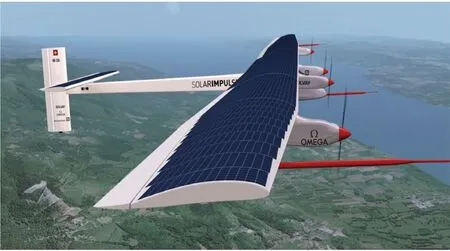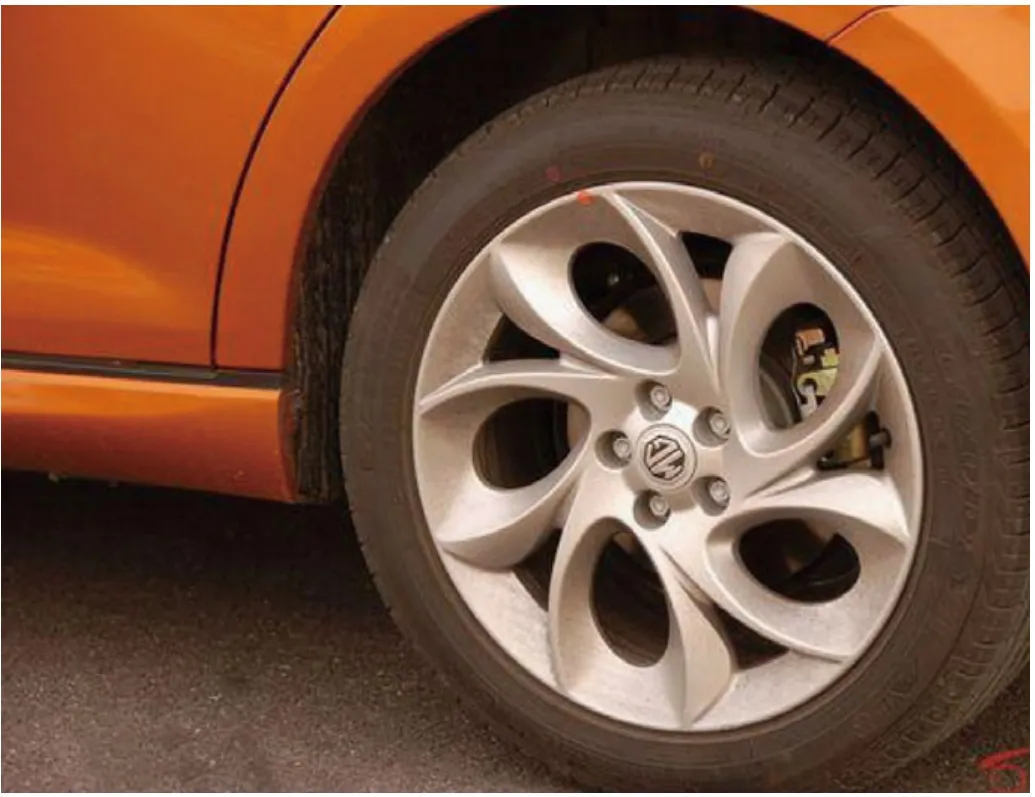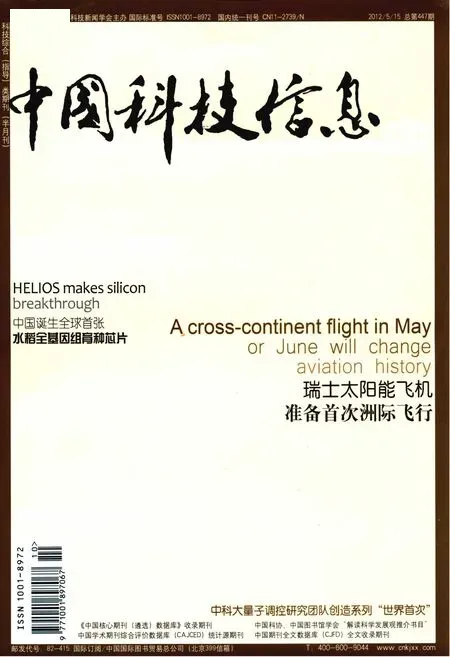国际科技信息
国际科技信息
欧盟先进硅材料研究取得重大突破
欧盟第七研发框架计划(FP7)信息通讯技术(ICT)主题资助850万欧元的研发项目HELIOS“互补金属氧化物半导体的光电子功能集成”,在近期的研究过程中取得了重大的创造性突破。
由法国原子能委员会电子与信息技术实验室(CEALeti)科研人员领导的,欧盟成员国法国、英国和比利时科技人员共同参与的研究团队,首次研发出世界上第一个硅基材料可调谐发射器,从而迈出了整体集成硅基发射/接收器(Tranceivers)的关键一步。研究结果在近日美国洛杉矶举行的“2012光纤通讯大会”上,正式对外宣布。
硅光子学是一项功能强大的新兴技术学科,硅光子学具备大规模制造互补金属氧化物半导体(CMOSs)光子器件的潜力,但光子器件制作目前因技术的缺乏而造价昂贵。此外,硅光子学的另一项重要障碍,是作为CMOSs基本材料的硅基光子源,制约了硅光子学的进一步发展。
研究团队的科研人员首先研制出一台新型调节器,利用该调节器制作出单一波长的可调谐激光器,20摄氏度温度下的临界电流20mA,调谐幅度45nm,超过调谐范围的侧模压抑率(Side Mode Suppression Ratio)大于40dB。
然后,科研人员将主动发光源必须的CMOS III-V型材料嵌入到一个硅晶片上,进行同时加工处理,如此,两项加工一次性处理完成。尽管加工过程中仍然采用传统的CMOS加工工艺,但新方法可以同时直接将主动发光源嵌入到硅晶片上。
科研人员在硅基材料上集成可调谐激光器、调节器和被动波导的能力,开辟了进一步开发硅基发射/接收器的有效途径。
从而满足各方面的需求:大城市群网络、互联网接入、服务器、数据中心、高性能计算机、以及光互联,实现光通讯的彻底变革。
HELIOS makes silicon breakthrough
Researchers in Europe have succeeded in presenting an integrated tuneable transmitter on silicon — the first time this has ever happened. This results are an outcome of the HELIOS ('Photonics electronics functional integration on complementary metal oxidesemiconductor, CMOS') project, which is backed under the 'Information and communication technologies' (ICT) Theme of the EU's Seventh Framework Programme (FP7) to the tune of EUR 8.5 million. The team presented the results at the recent Optical Fiber Communication conference in Los Angeles, United States.
Experts from the Electronics and Information Technology Laboratory of the French Atomic Energy Commission (CEA-Leti) and III-V lab, a joint lab of Alcatel-Lucent Bell Labs France, in cooperation with Thales Research and Technology in the United Kingdom, say the tuneable laser source integrated on silicon is a groundbreaking achievement in efforts to secure fully integrated transceivers. Researchers at Ghent University and the Interuniversity Microelectronics Centre (IMEC) in Belgium, and the University of Surrey in the United Kingdom, who designed the modulator, supported the research.
The group from CEA-Letiand III-V lab also demonstrated single wavelength tuneable lasers, with a 21 mA threshold at 20o Celsius, a 45 nm tuning range and a side mode suppression ratio larger than 40 dB over the tuning range.
The researchers say silicon photonics is a powerful technology. Silicon photonics have the potential to bring the largescale manufacturing of CMOS to photonic devices that are not cheap because the technology is missing. Another challenge to silicon photonics is the lack of optical sources on silicon, the base material on CMOSs, according to the researchers.
'We can overcome this problem by bonding III-V material, necessary for active light sources, onto a silicon wafer and then co-processing the two, thus accomplishing two things at once,' says Martin Zirngibl, Bell Labs Physical Technologies Research leader. 'Traditional CMOS processing is still used in the process, while at the same time we now can integrate active light sources directly onto silicon.'
Commenting on the results, CEA-LetiFrance Photonics Program Manager, Laurent Fulbert, says: 'We are proud to jointly present with III-V lab the results of the integrated silicon photonics transmitier and the tuneable laser. The ability to integrate a tuneable laser, a modulator and passive waveguides on silicon paves the way of further developments on integrated transceivers that can address several application needs in metropolitan and access networks, servers, data centres, high-performance computers as well as optical interconnects at rack-level and board-level. We are pleased to bring our contribution to these state-of-the-art results which can truly revolutionise optical communications.'

瑞士太阳能飞机准备首次洲际飞行
瑞士探险家贝特朗·皮卡尔24日在瑞士城市帕耶讷说,他和同伴驾驶的大型太阳能飞机“太阳驱动”号预计于今年5月从帕耶讷飞往北非国家摩洛哥,实现首次洲际飞行,目前他们正在进行最后阶段的准备。
发起这一项目的皮卡尔当天在记者会上说,这架太阳能飞机将在天气状况良好时择机从帕耶讷机场起飞,此后将在西班牙首都马德里和摩洛哥首都拉巴特各停留一次,在总共飞行2500公里后抵达摩洛哥中部城市瓦尔扎扎特,此次飞行将完全依靠太阳能。
飞行指挥雷蒙·克莱尔说,这将是“太阳驱动”号迄今航程最远的一次飞行,全程将持续48小时,飞机将由皮卡尔和另一位项目发起人安德烈·博尔施贝格轮流驾驶,这种“换岗”将在飞机中途短暂着陆后实施。在飞行期间驾驶员不休息,仅以三明治和能量食品充饥。
克莱尔说,“太阳驱动”号将飞越比利牛斯山和地中海,天气因素是最大挑战。这架飞机的机体较轻,对风、云、雨和大气湍流敏感。此外,“太阳驱动”号还要与途经的法国、西班牙和摩洛哥等国空中管理部门进行有效沟通,确保不会干扰民航和军机飞行。

博尔施贝格说,这次长途飞行是“太阳驱动”号2014年环球飞行前的演练,主要目的是协调机组人员与各国机场的合作,检验飞机的维护保养措施等。
依据设计,“太阳驱动”号是能昼夜飞行的太阳能飞机,由超轻碳纤维材料制成,翼展达63.4米,与空客A340型飞机翼展相仿,其重量只有1600公斤,相当于一辆普通小汽车。
这架飞机的机翼上装有约1.2万块太阳能电池板,为4台电动机供电,白天飞行时可将多余的太阳能电力储存到蓄电池中供夜间使用,实现无燃油昼夜飞行。
“太阳驱动”号于2010年7月完成首次24小时不间断飞行,去年5月首次完成瑞士至比利时跨国飞行。
A cross-continent flight in May or June will change aviation history
The world's largest solarpowered plane, Swiss-made Solar Impulse, will take its f rst-ever crosscontinent f ight in May or June.
The plane, co-piloted by Bertrand Piccard and Andre Borschberg, will attempt for the first time to fly more than 2,500 km, taking of in Payerne in western Switzerland, crossing the Pyrenees and the Mediterranean without using fuel, and landing in Morocco.
The exact date for taking off will be decided according to weather condition, said Andre Borschberg, co-founder and CEO of Solar Impulse that made the aircraft.Bertrand Piccard and Borschberg will take turns to f y the aircration its 48-hour journey, with a scheduled stopover near Madrid to change pilots, Xinhua reported.
This long-duration flight will serve as a dress rehearsal for the round-the-world flight in 2014, and will allow the team to gather experience in cooperating with international airports, integrating the prototype into regular air traffic patterns, and managing the logistics of maintenance, said Borschberg.Solar Impulse, the f rst aircraft that can fly day and night without fuel or polluting emissions, has a wingspan of 63.4 meters, as wide as an Airbus A340, and weighs only 1,600 kg. It has 12,000 solar cells mounted on the wings, which provide momentum for its four electric motors.
The plane took its first international f ight from Switzerland to Brussels May 13, 2011, and marked its second international f ight to Paris in June last year.
According to Solar Impulse, the solar aircraft “can fly day and night without fuel or polluting emissions.”
A press release issued by the company stated: “This revolutionary carbon f bre aircrati, that has the wingspan of an Airbus A340 (63.4m) and the weight of an average family car (1,600kg), is the result of seven intense years of work, calculations, simulations and tests by a team of 70 people and 80 partners.
“A plane this light and of this size has never been built before. The 12,000 solar cells built into the wing provide four 10HP electric motors with renewable energy.
“By day the solar cells recharge the 400kg lithium batteries which means the plane can f y at night.”
德研发“智能”轮胎可根据天气环境改变外形

对一些汽车车主而言,挑选轮胎或许是一项令人纠结的抉择,考虑刹车性能还是油耗、应该如何在长途旅行中应对天气变化都是困扰车主的难题。
不过,德国研究人员正在研发一款“智能”轮胎,有望消除车主的烦恼。
德国莱比锡应用科学大学学者德特勒夫·里默尔及其研究团队在今年的汉诺威工业博览会上推出这款轮胎。依据构想,它可以根据天气、地形作出“改变”。
法新社23日援引里默尔的话报道:“今天,选择轮胎往往要作出让步,兼顾油耗和刹车性能,驾驶员还需要考虑各种天气状况。”
不过,里默尔说,他们研制的“智能”轮胎具备“适应性”,装有电子传感器,可以辨认各种地形,测定路面是干燥、积水还是积雪,从而依据传感器数据在车辆行进间改变外形。
“这意味着,你的车总是安装最好的轮胎,噪音和油耗都可以自动优化,”里默尔说,“驾驶员不用再考虑如何让轮胎适应(环境),轮胎自己会‘考虑’。”
他说,这款轮胎仍处在研发阶段,距离推出成品尚有时日,主要原因是研究人员还没有找到可用于制造轮胎可变化部位的合适原料。
German scientists unveil 'intelligent' tyre for all weather
Are you fed up of having to change your summer tyres for winter tyres at the first sign of snow? Or of being caught out on a long car journey by sudden changes in the weather?
That may soon be a thing of the past, according to a group of researchers at Leipzig university, who are developing the world's first-ever "intelligent" tyre which automatically adapts itself to the prevailing weather conditions even while you are driving.
A team of researchers headed by Detlef Riemer at the University of Applied Sciences in Leipzig unveiled the "adaptive tyre" at this year's Hanover Fair, the world's biggest industrial fair taking place in the north German city this week.
"Today's choice of tyres are always a compromise between the ability to brake and petrol consumption," Riemer said.
"The car driver has to take into consideration every sort of weather condition and you can't change tyres while you're driving."
But Riemer's "adaptive tyre" is equipped with electronic sensors which recognise different sorts of terrain -- whether motorway or untarmacked roads -- and whether it's dry, raining or snowing.
And accordingly, the tyres' prof les are automatically raised or widened accordingly, even when the car is in motion.
"That means your car is always equipped with the best possible tyre and noise and petrol consumption are automatically optimised, too," Riemer enthused.
"The driver no longer has to think about adapting their tyres. The tyre itself 'thinks' too."
The tyre is still a long way from a finished product and research is still ongoing, notably on the materials that can be used for the moveable parts of the tyre's prof les.
"But we've patented it already, just in case," Riemer said.

德国研究人员发现癌细胞的“阿基里斯之踵”
德国维尔茨堡大学与亥姆霍兹大研究中心联合会传染病研究中心的研究人员合作研究,发现了癌细胞的“阿基里斯之踵”,其相关研究成果已在《自然》杂志上发布。
新的癌症治疗方法的基本机制是:在关闭癌细胞内部的能量监控机制后,癌细胞将无视内部的新陈代谢需要继续分裂繁殖,最终因缺乏足够能量供应而死亡。制药企业已经对该技术方案表示出极大兴趣。
根据德国癌症援助协会发布的统计数字:德国每年新增约49万癌症患者,而同期约有21.8人死于癌症。专家预测到2050年该数字还将会提高约30%。目前,对于癌症常见的治疗方式是放疗和化疗,通过放疗和化疗来阻止癌细胞继续生长。此次,德国维尔茨堡大学的研究人员却采取了全新研究思路:让癌细胞无节制生长直至死亡,而其基础理论就是简单的后勤供应问题。
与其他身体细胞一样,癌细胞存活生长就要从营养物质中不断获取能量。一方面用于细胞自身生成发育,另一方面用于细胞分裂繁殖。此外,还要保障细胞内部的基本新陈代谢。研究人员在研究关闭特定的酶对癌症细胞反应过程中,发现了具有资源管理功能的一种“监控分子酶”。当有足够的能量ATP情况下,癌细胞自身生长发育和分裂繁殖过程是平衡的。当能量ATP稀缺情况下,监控分子酶将通过调节机制首先确保癌细胞自身基本新陈代谢的能量需求,从而实现自我保护的目标。为此,在能量稀缺情况下,癌细胞如果无法从监控分子酶获取能量平衡反馈信息时,它们将继续浪费大量能量资源进行分裂繁殖活动。最终会因为能量供应不足而自我死亡。
研究人员把这种监控分子酶称为Ark5酶,这种酶就好比是癌细胞的“阿基里斯之踵”,可以作为治疗癌症的新药物。研究人员已成功在实验鼠体内进行了测试,证实其可以有效抑制和缩小实验鼠体内的肝肿瘤。目前实验显示该方法在实验动物体内可以有效对抗结肠癌和肝癌细胞,对其它癌细胞是否有效还有待研究。此外,研究人员还惊奇发现,监控分子酶失去活性对于普通健康细胞没有任何影响,其具体原因还有待进一步研究。当然,研究人员和制药企业更看重的是其未来用于治疗癌症的巨大潜力。
An Indirect Way to Get at the Elusive MYC Cancer Target
Scientists at the Theodor Boveri Institute at the University of Würzburg in Germany have potentially found a way to indirectly target the MYC oncogene—an elusive cancer therapy target. Martin Eilers and colleagues discovered that cancer cells with upregulated levels of MYC are dependent on AMPK-related kinase 5 (ARK5) to stay alive. ARK5, it turns out, is necessary for these cells to maintain metabolic homeostasis. The study, published last month in Nature, shows that inhibition of ARK5 causes these MYC-dependent cells to die, partly due to depriving them of cellular ATP, leading to apoptosis.
Malignant B-cell lymphocytes seen in Burkitt lymphoma, H&E stain. The MYC gene was discovered in the 1970s in Burkitt lymphoma patients.The research validates the connection between MYC and ARK5 expression seen in several primary solid tumor samples, including liver and pancreatic carcinomas.
ARK5 may be a potential drug target for tumors that overexpress MYC, according to the authors. This would be a way to get around the problem of targeting MYC itself. In general, the authors highlight that targeting the “oncogene-altered energy metabolism” pathways in tumor cells may be a new way to isolate cancer therapy targets.
The MYC gene was discovered in the 1970s in Burkitt lymphoma patients. MYC encodes a transcription factor that is important for regulating many pathways involved in cell growth, cell cycle progression, and apoptosis. It is an oncogene that is found deregulated in many cancer types. MYC does not have good target-binding sites and is far away from the cell membrane, two reasons that help explain why no good drug candidates have been able to target the protein.
Partial karyotype showing translocations involving chromosome 8 and chromosomes 2, 14, and 22. The cellular oncogenes MYC, FOS, and SIS have been mapped to the chromosomal sites indicated. H, k, and x indicate the location of genes for the heavy and light chain immunoglobulins“MYC is such an elusive target since it is a transcription factor with large protein-protein interaction surfaces,” explains Eilers.
The Study and Results
The researchers identified ARK5 and a related kinase, AMPK in a short-interfering RNA screen using a human cancer cell line overexpressing MYC. The purpose of the screen was to identify factors that facilitate the survival of MYC overexpressing cancer cells. When ARK5 was depleted, the MYC-expressing cells showed signs of apoptosis. The study found that the levels of MYC protein necessary for dependence on ARK5 are much higher than the MYC levels that are required to induce proliferation. Induced expression of apoptosisinhibiting factor did not alleviate the dependence of the cells on ARK5.
The experiments in the published paper show that ARK5 helps cancer cells survive in a metabolically stressful environment induced by MYC hyperactivity.
In an MYC-overexpressing liver cancer mouse model, the researchers show that ARK5 is important. "ARK5 is necessary to maintain sufficient respiratory capacity in MYC-transformed cells,”state the authors. Depletion of ARK5 caused cells to undergo the cell cycle in a much slower manner, showing that ARK5 facilitates cell growth. This demonstrates the synthetic lethality of deregulated MYC expression and inhibition of ARK5.
The study also showed that the synthetic lethality of high MYC expression and loss of ARK5 could be rescued by addition of rapamycin. Rapamycin is a drug that inhibits the mammalian target of rapamycin (mTOR) pathway that is involved in cell survival and proliferation. This shows, explained Eilers, that deregulation of mTOR is the “key mode” of cell death as mTOR inhibitors can protect cell viability in MYC-overexpressing cells that are depleted of ARK5.
To test the potential therapeutic efficacy of ARK5 depletion, the study researchers transplanted mouse liver cancer cells that express MYC—depletion of ARK5 caused cell death, and rapamycin restored ATP levels and sustained the ARK5-depleted culture. The transplanted cells resulted in 8 of 8 carcinomas in mice.
“We propose that negative regulators of the mTOR pathway, like ARK5, may be good targets for therapy of MYC-expressing tumors,” says Eilers.
Next Steps
“The key question, in my view, is whether the metabolic crisis that we observe in tissue culture when we deplete ARK5 in MYC-expressing cells, is also seen in vivo in human tumor cells,” says Eilers. The evidence for the metabolic imbalance created by removing ARK5 has so far only been shown in engineered mouse cells in vivo.
Eilers says that there are currently no available inhibitors of ARK5 but that he believes it is a good idea to develop them to test them in MYC-expressing tumors. He adds that recent work from the laboratory of James Bradner, MD at the Dana-Farber Cancer Institute in Boston, on compounds that inhibit a protein called BRD4 is “an exciting approach.” BRD4 functions to activate MYC.
“Targeting MYC, after all these years, is becoming a rational approach for developing tumor therapies,” says Eilers.
干细胞培育毛囊技术有望治疗秃头症
日本研究人员在新一期英国《自然!通信》杂志上发表报告说,他们利用成年实验鼠干细胞和人类干细胞分别培育出毛囊,并移植到没毛发的实验鼠皮肤上,都成功让它长出毛发,未来有望将这一技术用于治疗秃头症。
东京理科大学教授!孝领导的研究小组从实验鼠皮肤上获取了两种干细胞,并在实验室中将它们培育成毛囊,然后将这种人工培育的毛囊移植到本身没有毛发的实验鼠皮肤上,结果后者成功长出了毛发。分析显示,移植的毛囊与周围的皮肤和神经等组织融合良好,在毛发脱落后还能继续长出新的毛发。
据研究人员介绍,他们还从一名人类秃头症患者的头皮上提取了相关组织,并按同样方法培育出毛囊,移植到实验鼠皮肤上后也能长出毛发。
这项成果为秃头症患者带来新希望。如果进一步临床实验取得成功,秃头症患者将来也许只需提供一些头皮细胞,就能重新长出头发。研究人员说,将力争10年内把这项技术转化为可临床应用的新疗法。
除了头发再生外,研究人员还说,可通过在人工培育毛囊时改变其中的细胞构成,从而控制毛囊移植后所长出毛发的密度和颜色。也就是说,一名白发稀疏的老者将来或可利用这项技术获得满头浓密的黑发。
Attention, balding men. Japanese scientists regrow human hair in mice
A tiny black tutiof hair on a bald mouse’s head is evidence that stem-cell research in Japan could reverse hair loss in humans.
“The bioengineered hair follicle develops the correct structures (and) restored hair cycles,” Dr. Takashi Tsuji reports in the current issue of Nature Communications.
The strands of hair implanted themselves below the skin of the mice, showing it was not only possible to restore the hair follicle, but also to root it in the scalp, the study said.
Tsuji and his organregeneration team at Tokyo University Science have managed to “significantly advance the technological development of bioengineered hair follicle regenerative therapy.”
Restoring the nervous system is a critical issue in organregeneration work, Tsuji said. The study suggests that transplanting a“bioengineered hair follicle germ”can revive the muscles and nerve f bres associated with hair growth.
Painstaking research began with the bioengineering of various types of hair-follicle germs, which were grafted onto bald mice. The germs carried tiny nylon guides to nudge the growing hairs in the right direction.
Once that proved successful, the team moved on to bioengineering human hair-follicle germs and transplanting them in mice.
The human hairs grew in 21 days with the correct shatis, inner root sheaths and surrounding cells that normal human hair would, the study said.
Further tests proved the human hairs were, indeed, human.
The study is at the “proofof-concept” stage, meaning the theory works. Scientists will have to do more research to see if it can turn into therapy for baldness.


